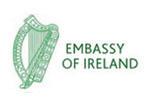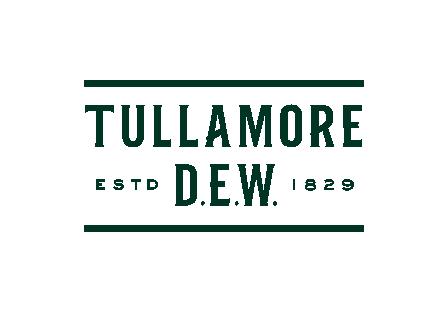ST PATRICK’S DAY 2023





The one thing they got wrong in ‘The Banshees of Insherin’, the charming Irish film that will most likely end up winning no Oscars come Sunday, is the landlord.
He’s mostly forgettable and in awe of his regulars – nothing more than a glorified barman. Maybe this was intentional and an accurate representation of life on sleepy Irish islands in 1923.
But it’s not the impression you get visiting the Irish pubs in Copenhagen, where the landlords are very often the lifeblood of the establishment.
From Tony at Kennedy’s and Naoise at the Shamrock Inn to Eamonn at Gravens Rand and Paul at Cafe Svejk, these guys are supremely gifted at what they do: it’s a pleasure to enjoy a drink in their company, so it’s no wonder so many regard these pubs as their second homes.
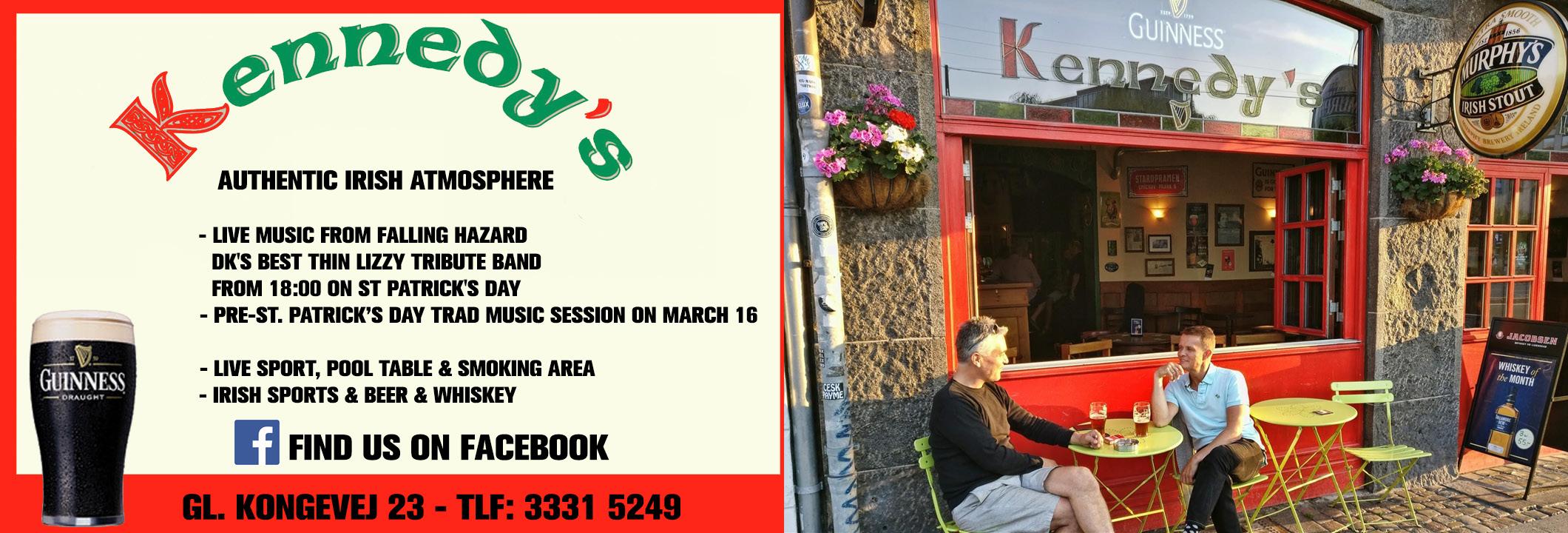
In fact, when we talk about highly-skilled foreigners, we should include the Irish landlords, as they are as valuable an export to Denmark as biodegradable plastic specialists.
Fact: nobody does landlording better than the Irish.
Great craic at The Globe
After all, doing something for 10,000 hours makes you an expert – although you would imagine most of them get a headstart and put in overtime – and in the case of Globe landlord Brian McKenna, it has been 25 years since he opened the doors of his establishment.
We caught up with him (see pages 4-5) to find out what the pub has planned for St Patrick’s Day, along with a few anecdotes about the stunning interior and how the Globe managed to mark the big day during the COVID-19 lockdown.
To watch Brian at work – the best barman this side of the Mississippi, apparently – is always a privilege: proof again that landlording is an artform we should cherish.
Another overlooked profession? Talking of artforms, it’s worth asking whether
improv performers get the recognition they deserve – compared to actors, dancers or even stand-up comedians.
In this issue we interview Sarah McGillion (pages 6-7), the Irish founder of SuperCut, an improv group who are in fact performing on St Patrick’s Day, although that might be a coincidence!
Sarah confesses to only having one Irish friend in Denmark and didn’t really sound too confident when she said she thought they played Gaelic football in Copenhagen. Well, hopefully Sarah, you might learn more about the Irish community when you read this supplement!
For over 20 years now, the Irish community have been working industriously to make St Patrick’s Day the number one national feast day in Copenhagen.

The efforts of the organisers of the Parade (see page 8) and 3-legged Race (pages 10-11), along with the Irish pubs, have turned the day into a major draw for Copenhagen, as every year thousands flock here from all over Europe to join in with the fun.
It’s also an opportunity to sell Ireland as a fabulous holiday destination (see pages 12-15).
Shoutout for the actresses!
Coming full circle, ‘The Banshees of Insherin’ has no fewer than four performance nominations (none of them will win) in what is a breakout year for Irish acting.
But while the prowess of Ireland’s men in the field is well documented, did you know that in recent years the women have started to give them a pretty decent run for their money (pages 16-17).
It’s another reminder that Ireland’s most successful export is neither Guinness nor its whiskey, but its people.
I am delighted to have been appointed recently as the new Irish Ambassador to Denmark.

I look forward very much to meeting with the Irish community over the weeks and months ahead. I know that the community is vibrant and thriving, and that it includes a wide range of interests and activities. I would like to pay tribute to the various groups, organisations, and individuals who work so hard to nurture and promote Irish interests, culture and heritage right across Denmark. During my time here, I hope to visit the different regions, cities and towns to meet with as many of you as possible. In addition to the many Irish people who have been in Denmark for some time, I would also like to extend a welcome to all those who have arrived here more recently.
Relations between Denmark and Ireland go back many centuries – including to Viking times. Our two countries share many similarities, and the political, economic, social, cultural and people-to-people ties are very strong. In these challenging times, following the Russian invasion of Ukraine and increased geopolitical tensions,
we need friends more than ever, and there is true friendship between our two countries. It is a privilege and an honour to represent Ireland in Denmark, and I look forward to nurturing and developing the excellent bilateral relationship, as well as serving Irish citizens.
As Ireland’s National Day, St Patrick’s Day is a time of celebration in Ireland and for all those of Irish descent and affinity around the world: an opportunity to share Irish culture and heritage. The Irish family certainly does not begin and end on the shores of our small island! I would like to congratulate the Irish community in Denmark for their hard work organising the wonderful series of events this year, where music, dancing, and face-painting are all available! Together with the team at the Embassy, I look forward to celebrating with our Irish, Danish and international friends, and I hope to participate in as many of the events as possible throughout the course of the day.
2023 is an important year for Ireland, as it includes three significant anniversaries.
It marks 100 years of our membership of the international community and our work to promote democracy, peace and security. We have just completed a very busy two-year term as an elected member of the UN Security Council, where our work was underpinned by three core principles: building peace, strengthening conflict prevention, and ensuring accountability. Nowhere has the importance of accountability been more obvious than in Russia’s ongoing brutal aggression against Ukraine. Having just marked the first anniversary of the invasion, Ireland continues to stand firmly with Ukraine in defending its sovereignty and territorial integrity.
2023 also marks 50 years of our membership of the European Union – an anniversary that we share with Denmark, which joined the then-European Economic Community (EEC) together with Ireland back in 1973. This shared experience has allowed the ties between our two countries to flourish and develop, as witnessed by the many people from each country living, working, studying or holidaying in the other. Ireland is proud to have contributed to the development
of today’s European Union, with the EU in turn having helped to create the prosperous and progressive Ireland of today. There is no doubt that the global challenges we face can only be addressed together.
And 2023 also marks the 25th anniversary of the Good Friday Agreement – an opportunity to celebrate what was a transformative moment for everyone on the island of Ireland, bringing peace and resetting relationships. There have been challenges along the way, but the Good Friday Agreement remains the foundation on which modern Northern Ireland sits and the framework through that change can be navigated.
Elizabeth McCullough Ambassador of Ireland to DenmarkWe wish you all a very happy St Patrick’s Day!
 Lá Fhéile Pádraig sona daoibh! Glædelig Sankt Patrick’s dag!
Lá Fhéile Pádraig sona daoibh! Glædelig Sankt Patrick’s dag!
Now he’s been at the helm of The Globe Irish Pub near Nørreport for over quarter of a century, it’s probably fair craic we can finally use the Monty Python reference
If you come up from the bowels of the Metro at Nørreport Station and dive down Nørregade, you will come across, after about 100 metres on your right, the Globe Pub.
Running since 1997, this venerable establishment is a shining star in the constellation of Copenhagen’s Irish pubs. Ahead of St Patrick’s Day we caught up with landlord Brian McKenna for some craic.

As you enter the pub you walk past a huge wrought-iron clock face and a tree that goes from floor to ceiling. I ask Brian about the tree.
“Yeah, the story behind the tree is that tree landed in the street on a very windy Sunday one October. And we couldn’t lift it, so we had to cut it in half. And then we got in trouble with the police because we were blocking the street. So the tree ended up in here.
“But if you’ve ever been to Waxy O’Connors in
London, they’ve got a tree like that.”
The church giveth
The pub is full of dark wood, lots of which is engraved. As it turns out, the Globe has a pious streak.
“All of the interior, and all the old bannisters and interior, come from a church in Wales,” Brian explains as we walk around.
“The panelling and stuff was all salvaged. The only thing that was new in here was the furniture. Everything else was from the church.”
Snug with a jug
Brian points me to a cosy looking enclave with a table in the middle, fashioned like everything else out of old church wood.
“So back then every Irish pub would have a ‘snug’. And the snug was invented because women weren’t allowed in pubs, but the women were allowed to go into the snug. The snug always used to be at the end of the bar, but here it’s a small way off.”
A good example of a snug, says Brian, is in ‘Peaky Blinders’, where the Shelby Brothers have their meetings.
The Globe is full of nooks and crannies, all replete with various churchy bits and pieces. There is even a library for anyone in search of some enlightenment. “We try to educate people here at the Globe,” Brian says.
Another peculiarity of the pub, which is on three levels, is the mosaic floor downstairs depicting many strange and wonderful beasts.
“That was done by a guy called TP,” Brian continues. “He actually used to get his inspiration from Christiania: he would light up a couple of doobies and work away and there you go.
As you can see it’s a bit different. There’s a pumpkin, there’s a snake, there’s an anchor. There’s lots of character on the floor.”
At the Globe there’s lots of character everywhere, and when you combine that with alcohol it can only lead to good things.
After the tour, we sit down for a cup of coffee, and the Q&A begins.
First of all, what’s St Patrick’s Day like at The Globe?
Well this year we’ll be opening at 12pm and we’ll be serving green beer from the Czech
Republic. It’s actually a beer the Czechs drink in spring, but we’re using it for St Patrick’s. It’s great for us anyway because it comes naturally green from the brewery.
We’ll also have live music all day. We always have a big party atmosphere. We’ll be serving traditional Irish food till seven or eight o’clock. We keep serving food until it becomes too crowded, but then we’ll stop because it becomes too dangerous.
We’re actually the only pub in Copenhagen that serves Irish food. We do Irish stew, Irish breakfast, and Irish beef and Guinness pie. And then on Friday’s there’s fish and chips.
When does the day usually start?
The day starts here at about 10am in the morning, when we start getting the place ready for St Patrick’s Day. We have the 3-Legged Race that’s passing through, so we have to set up an outside bar where we give them a beer, stamp them and send them off on their merry way.
And what time do you finish?
Sometimes the next day, yeah. It’s a long, long day. It can be quite stressful: there’s a lot of drunken people. But when it’s all over we’ll celebrate by drowning the Shamrock. But after that we have to pick ourselves up and get

ready for the next day.
Which could be a big day if Ireland win the Grand Slam in the Six Nations on the 18th …
It will be a big day. I don’t think we need to plan anything. I think people will come here – the rugby fans We are very much a rugby pub, so I do believe we will have a full house.
Are you a rugby fan?
I’m a rugby fan, yeah. Also a Liverpool fan, so a bit of both. I actually sponsor a rugby team here called Gentofte Rugby Club. It’s for kids up to 16, and my son plays there.
How has St Patrick’s in Copenhagen changed over the years?
What’s contributed to St Patrick’s Day in Denmark is the Irish pubs We have really highlighted St Patrick’s Day: we were the first ones. St Patrick’s Day was always big in Ireland. So then us Irish, who have left Ireland and opened up businesses overseas, have brought St Patrick’s Day with us.

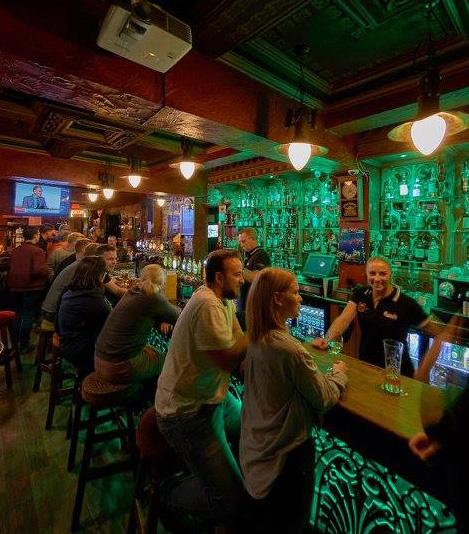
Now Ireland has become very famous. It’s famous because of Irish people and the craic, and we’re easy going and all that. And everybody wants to hear a ‘Diddley-Diddley-Eye’ and‘Whiskey in the Jar’. That’s St Patrick’s Day.
Do you have any stories about St Patrick’s Days past?
I remember that the early days of St Patrick’s Day wouldn’t be so busy. And then gradually St Patrick’s Day took off, and more and more people began to dress up and stuff like that.

But what really stuck out was two years ago during the Covid lockdown when we were closed on St Patrick’s Day. So I had some Guinness downstairs that was going out of date. I think I had ten barrels of it. And I think what am I going to do: send them back? I wasn’t going to do that.
So I put up on social media that there would be a free pint of Guinness for anybody who stopped by on Patrick’s Day.
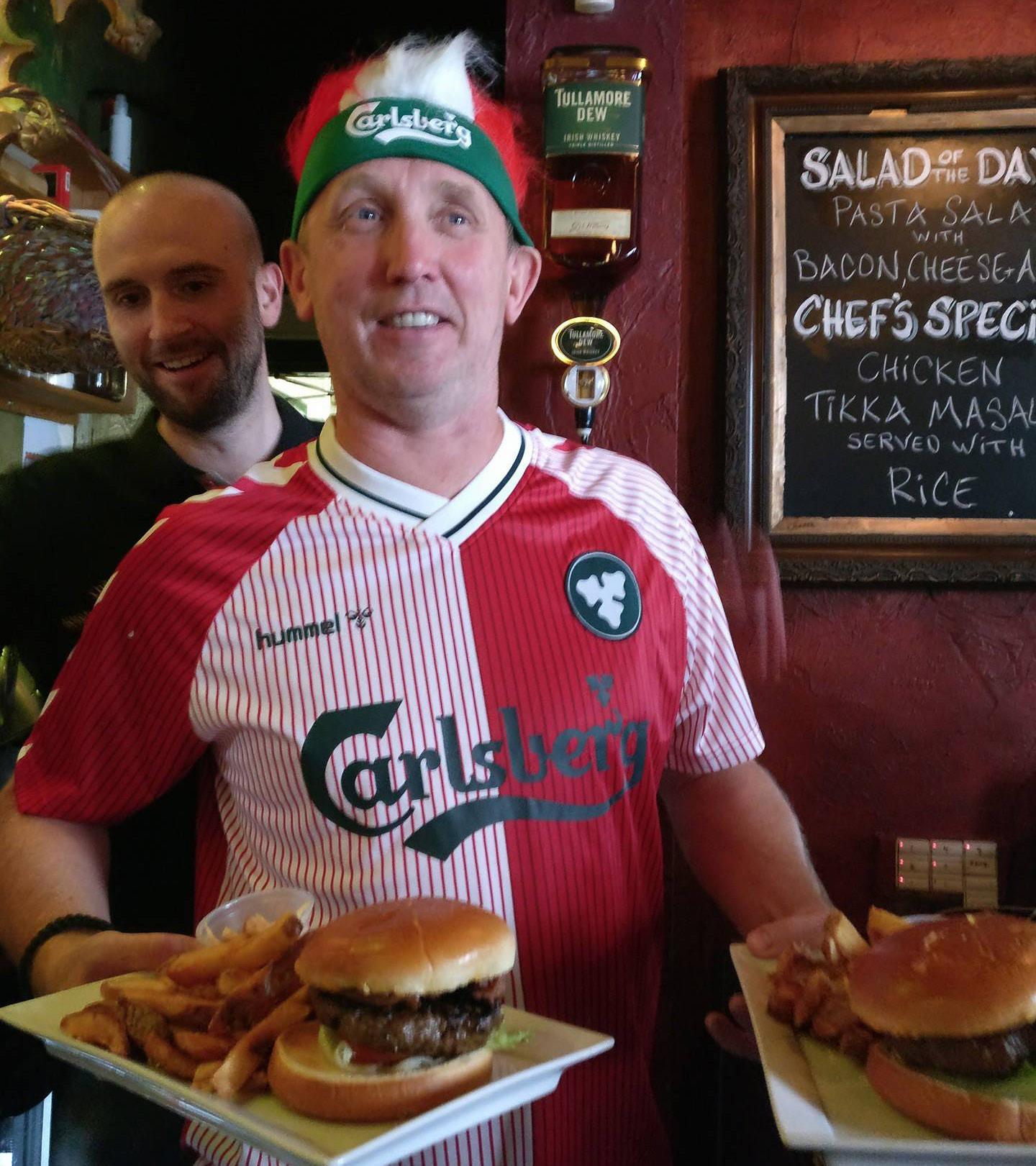
So people came and we ended up giving away a lot of Guinness and we asked people to donate to Shamrock Love, which is the charity that sponsors the 3-Legged Race. Some people were very, very generous in donating to the cause.
But the funny thing was then we were getting a lot of attention on the street from the police, because of social distancing and all that. We had a few people on the street making sure everyone was far enough away.
Then the crowd started to build. We were on the eighth barrel, something like that. And then the police came and said: that’s enough, you’re gonna have to close this down. There’s too many people in the area.
And so I came back into the pub after everyone had gone home. The bartender was behind the bar, and I told him the police had been and shut it all down. And he says: “I know. I called them! I went downstairs and there’s only two barrels left!”

The Globe opens at 12pm on St Patrick’s Day on March 17.


In the city’s thriving improvisation scene, there are no female entertainers more visible than Sarah McGillion, the founder of various groups, including If These Walls Could Talk
SAM CLEM-WHITING
A vibrant improv scene has been emerging in Denmark over the last ten years – or rather you could argue seven and a half years, tracing its rapid acceleration to the exact date in 2015 when Irish performer Sarah McGillion arrived on these shores.

Quite simply, McGillion gets it done. Barely a fortnight passes without yet another social alert for one of her shows. Lygten Station in Nørrebro is her venue of choice, although she is known to tread the boards all over Copenhagen – and even further afield.
She has quickly become ‘the face’ of improv in the capital.
Career in improv too
On top of performing frequently and teaching improv students, Saras also runs a company that is hired by businesses to teach employees
valuable improv theatre skills such as communication, listening, team-building, and presentation skills.
But while she has clearly made a home for herself in Denmark and forged a career doing what she loves, surely she still misses the ‘old country’ – particularly in the build-up and then subsequent celebration of Ireland’s national day.
To find out more, CPH POST felt there was no better opportunity than this St Patrick’s Day supplement to find out more about her.

When did you come to Denmark and why?
Seven and a half years ago. I came to study IT cognition because my background is computer science and maths. IT cognition was this great degree with interdisciplinary study between psychology, linguistics and computer science. There was a great professor here and a great program, and I came here to study and then I never left.
How was the transition to Copenhagen having grown up in Ireland?
I’m from just outside Dublin. A place Called En-
niskerry, but I went to school in Dublin. You’re always lucky when you move as a student, I think. Because you’re surrounded by lots of expats and people who are eager to make friends. There are lots of activities, groups and hobbies and things. Finding an apartment was tough though. Yeah, I think I’ve lived in eight places since I’ve lived here. I’ve moved a lot.
You are no longer a student; where do you find most of your friends now?
I used to do a lot of theatre when I was a kid. When I got here I wanted to start doing that again. I joined a theatre and met a lot of friends who are expats. That became a huge part of my life and kind of the focus of my friend group. I still do have some really good friends from university, but I’d say the majority of my friends are people I’ve done improv or theatre with. It’s also cool as well.
How did the theatre help you adjust to life in a new country?
I think you come out of your shell a bit. Especially with improv because you’re encouraged to build a safe environment together, support each other and be a little silly. One of the coolest things about improv in Copenha -
gen is that there’s so many engineers and computer scientists that are a part of it. You might think that everybody in the theatre is an artist or an actor, but a lot are technical people who have a super creative side that they don’t get to release at work. When you’re an expat, it’s really cool to meet people of all different walks of life.
Why improv?
I just got a huge rush. I also teach students how to do this on stage. And often because everybody works a day job, it’ll be in the evening. And I’ll finish the session at nine o’clock or 9:30 and I’m just so excited, so energised. I think you’re lucky when you find that thing that does that for you. And then that’s kind of your calling. I could talk about improv forever; I get really energetic and really passionate!
What were your expectations when you started out?
I was hoping to find that joy I had doing theatre as a kid, and also friendship. I was looking for friends. I also realised I was in my mid-20s and I didn’t really have a hobby. It was to meet new friends, find a hobby. The idea wasn’t actually even to get on stage originally. It just happened quite quickly. The idea was honestly just to do classes, meet people and have fun. It kind of transformed quickly. I got on a team and we were performing weekly and I loved it. It can be quite addictive performing. I love performing. I love to be creating something that’s never been created up on stage with some of my best friends. While entertaining an audience.
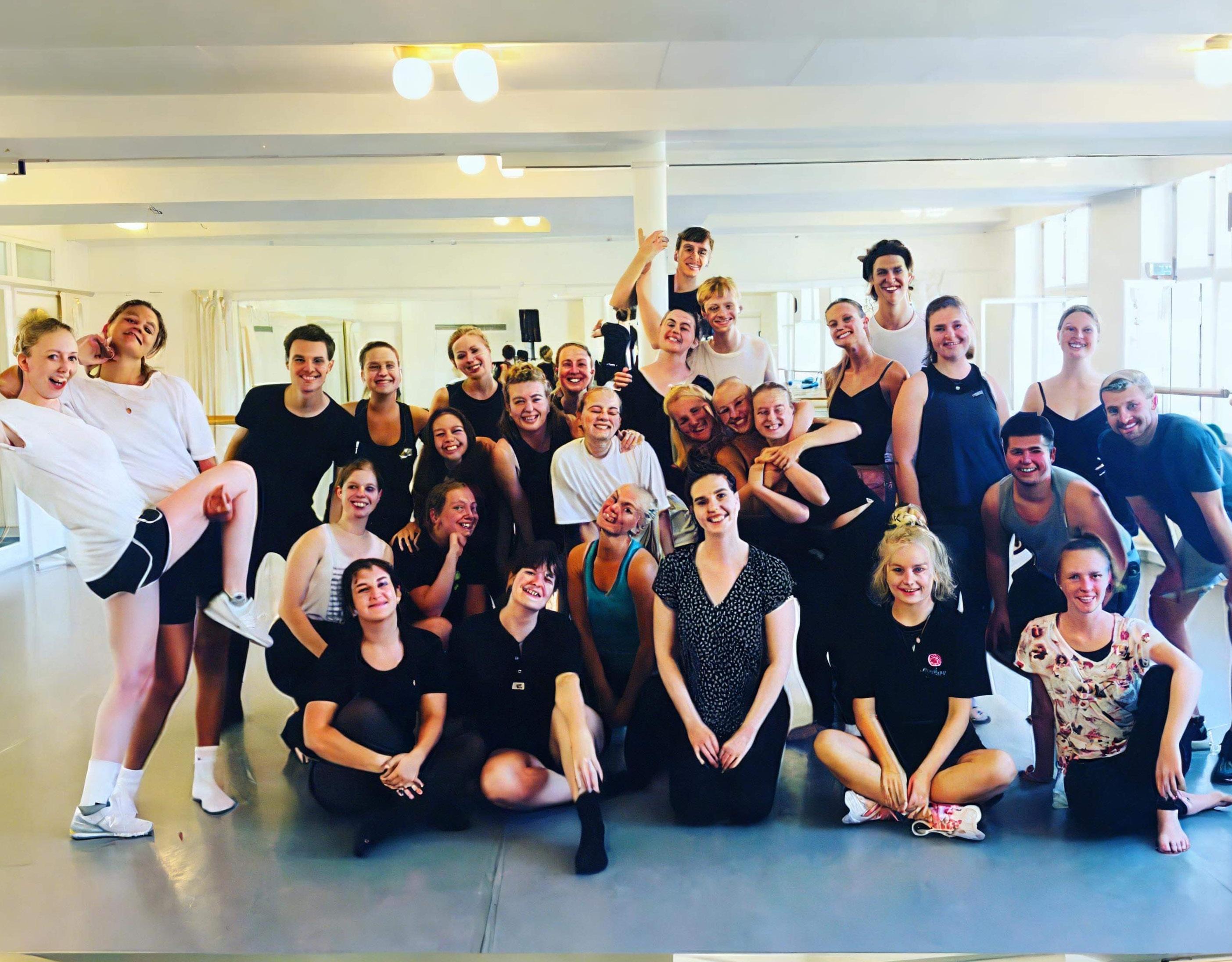
What draws you to teaching improv and improv skills – especially to business clients?
I really enjoy teaching business clients, because we often have people who have more of a shell. Because they’re in a workplace or a professional setting, they don’t want to look silly, and they don’t want to make mistakes. After a successful session, when you see people have kind of cracked that shell a little bit, or people are bonding or a bit more open, there’s something super-awesomely rewarding about that. I also love to teach students who want to be performers, because they have this hunger and excitement. And whenever you teach, you learn something.
What will you be doing for St Patrick’s Day?
I have a show. We’re doing a mediaeval fantasy-themed show. It’s at Lygten Station at 7pm. It’s my team SuperCut with another Irish guy. So there you go: two Irish and a Danish-Canadian. The three of us will be improvising mediaeval fantasy. We create a movie on stage live for the audience based on the title the audience suggests. And then we create a movie. The second half of the evening we do the deleted scenes or the


director’s commentary or whatever the audience wants to see more of from the movie that might have ‘got cut’.
What’s the Irish community like in denmark? Where is it? How are you able to feel it?
I honestly don’t know. I have one very good Irish friend. He’s the producer and co-host of the podcast Coping in Copenhagen, and he performs with me in SuperCut. We met by accident. I think he tried to organise an improv workshop And then we bonded. similar personalities, and it’s quite easy to bond when you’ve got similar references. I’ve seen on facebook that there is Gaelic football in copenhagen.
Sara will next be performing in ‘A Knight to Remember: The Spontaneous Medieval Fantasy’ at 19:00 on March 17. Tickets cost 60 kroner and are available from billetto.dk.
Since its debut in 2005, the Copenhagen St Patrick’s Day Parade has established itself as one of the capital’s highlights of the year
CPH POST
St Patrick might be the patron saint of Ireland, but on his feast day on March 17 “everyone is Irish!”, according to the organisers of the annual parade through the streets of Copenhagen.
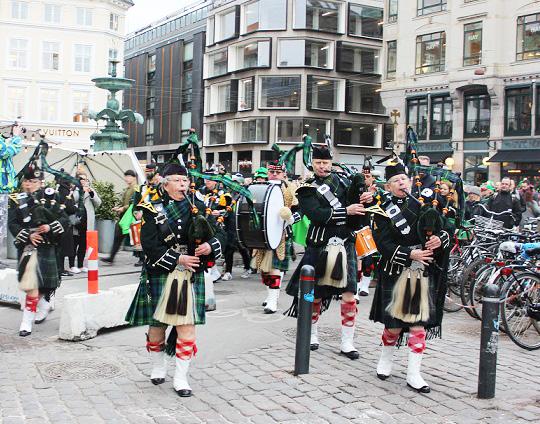
With its origins as a 17th century religious festival for feasting, the holiday has grown in international appeal over the years and is now synonymous all over the world with shamrocks, lively parades and overall merriment – an occasion for everyone to enjoy!
And for nearly two decades now, the Copenhagen St Patrick’s Day Parade has been turning the streets awash with green!
Going green
“The motivation for organising a big event like a parade in Copenhagen was to give the Irish expats living here, along with people from all nationalities who are fascinated by or feel a connection to Ireland, a platform where they can celebrate Ireland’s national day with the whole family at a family-friendly event,” the parade’s co-organiser Marianne Green tells CPH POST.
“The ‘Everyone is Irish’ slogan we chose felt right because it is so important for us to invite and engage people who are not familiar with Irish culture or are not Irish and send a message that we can all share and take part in each other’s cultural celebrations across nationalities and culture.”
A testament to the cultural inclusivity of the city, each year the celebrations continue to grow as Copenhageners delight in a taste of all things Irish.
With so much live music, face painting, traditional dancing and Irish coffee to consider, CPH POST is here to give you a rundown of what is planned for the day.
Return to Rådhuspladsen
The City Hall Square will act as the main location for the festivities. A large tent will be set up in the square to accommodate face painting and a costume shop to buy all the necessary
green accessories for the parade, while live entertainment will take place on stage. And, of course, no St Patrick’s Day tent would be complete without an Irish café and bar.

The festivities commence at 13:00 with the opening of the café and bar, serving Irish whiskey from Tullamore DEW, Irish beer and stout from O’Hara’s Crafts Beer, an environmentally-friendly brewer based in Ballyphilip, County Carlow, and hot chocolate. Make sure you try one of the custom-made St Patrick’s Day cookies baked specially for the occasion.
Free face painting for children will take place inside the tent between 15:00 and 17:00 to make sure they look properly festive!
It is important to remember to wear green
to the event – but just in case you forget, a costume shop will be open inside the tent where you can buy some last minute shamrock-inspired apparel.
Next to the tent in the square, an open air stage will play host to live folk music – courtesy of the Early House band featuring Colm Doyle (vocals), Paddy Lawless (fiddle), Lars Nilsson (accordion), Daniel Johansson (bouzouki) – and traditional dancing from 15:30 right up until the parade is set to begin.
Among the performers are the Dark Green School of Irish Dancing, returning for yet another year with their tribute to the Riverdance, and the Copenhagen Irish Set Dancers with ‘Sean Nós’ (Gaelic for ‘old style’), a traditional tap dance.
All the best of Irish musical traditions will be there to lend City Hall Square a distinctly Irish tune.
Anyone wearing green can freely take part in the parade and walk along with the likes of the Copenhagen Showband and the Dark Green School of Irish Dancing. And even play music, as the Bodhrán Band has a limited number of hand drums for those who want to participate – gather near the stage at around 16:00 for a quick pre-parade class! – or bring your own along and take part.
GAA, the city’s Gaelic football and hurling club, will also be arriving at 16:00 to take part in
the parade, with talk of a few demonstrations before kick-off.
Ian Burns returns again to lead the procession as St Patrick himself, and a few four-legged companions in the form of Irish wolfhounds and terriers will follow behind – doubtlessly wagging their tails through the streets of Copenhagen.

Make sure you arrive well before 17:00 to secure your spot in the parade – it’s helpful to organisers if you register your participation via the event’s official Facebook page – and again, don’t forget to wear green!
Starting from Rådhuspladsen at 17:00 the parade will follow a route along Vester Voldgade, Stormgade, Vindebrogade, Højbro Plads, Gammel Strand, Nybrogade, Rådhusstræde, Gammeltorv, Nytorv, Slutterigade, Lavendelstræde and Vester Voldgade, before returning to Rådhuspladsen.
The parade will conclude with one more song from the Copenhagen Showband: “a parting glass to finish off a great day”.
THE SCHEDULE
- 13:00 - 18:00: Café and bar open
- 15:00 - 17:00: Free face painting for children
- 15:30 - 17:00: Live on-stage entertainment
- 16:30 - 17:00: Participants start gathering
- 17:00 - 17:40: Parade duration
REGISTER via facebook.com/events/1320058805233755


Since its inception over two decades ago, the event has raised nearly 600,000 kroner for charity
CPH POST
“There’s four of us traveling to Copenhagen for the weekend – my husband and I are coming from Oslo while my sister and her boyfriend are flying in from Manchester,” Norway-based racer Stephanie Johnston-Pearce told the organisers of the Shamrock Love’s 3 Legged Charity Race 2023 upon registering.
“It’s my birthday on the 18th so we LOVE making a full celebration of it with St Patrick’s Day. We just found out about the 3 Legged Charity Race – so cool and super exciting! We can’t wait!”

Oslo, Manchester … clearly word is spreading about the race – a wonderfully wacky way of spending the big day in one of Europe’s most charming cities.
Guzzling up the opposition
Johnston-Pearce’s team is called the Guinness Guzzlers – one of 50 to so far register via the event’s website, which is half the permitted allocation, as only 100 pairs will be able to take part.
Registration began on March 1, so that’s half the field in less than a week! Also already signed up are last year’s winners, Team Høgenhaven, who completed the route in 20 minutes 21 seconds, and last year’s slowest team, SPS 1, who finished in just under 8 hours!
At the time of going to press, there is still availability, the organisers confirmed to CPH POST, but be quick! With this year’s event taking place on a Friday, there’s bound to be more interest than normal.
No limit on donation size
Pre-race registration costs a minimum of 100 kroner per racer – there is no limit on how much each racer can donate – and must be carried out using MobilePay via 299333.
This could be problematic for anyone hoping to register from abroad, so don’t be surprised if Stockholm Seamus, Dublin Dermot or Oslo Orla enlists you into helping them – but bear it in mind there is normally a huge incentive to help them or indeed make a charitable donation of your own (via PayPal, GoFundMe,
THE RULES
Complete the race entirely on foot.
It’s okay to walk – the absolute majority of entrants are doing it for the craic, and very few run at all!
Drink half a pint of beer at each participating pub: so five in total
Get your scorecard stamped as proof at each pub before hobbling on your merry way.
Wear something green
Dress up – there is a prize for the bestdressed team too!
Although unconfirmed at the time of going to press, last year the main race sponsor Guinness was able to grant one of the lucky donors a trip for two to Dublin that included travel expenses (up to 3,000 kroner), airport-hotel transfer both ways, two nights at a four-star city centre hotel with breakfast, and a day out at the Guinness Storehouse including lunch.
Same three charities again Thanks to Guinness, all of the donations go to charity, and this year the race will again be dividing the proceeds equally between three children’s charities: Danske Hospitalsklovne, Laura Lynn Children’s Hospice and CCAFO (Cambodian Children’s Advocacy Foundation Organization).
The race has been supporting the charities since 2012, 2015 and 2010 respectively, and ahead of the last race had raised 138,700, 86,700 and 164,700 kroner for them.
Since its inception in 2001, the race has raised over 600,0000 kroner for charity – including 15,000 in 2020, even though the race was cancelled. In 2012, a record 600 racers took part, but the maximum number is now 200.
Five pub pit stops
This year, the race will begin at Kennedy’s Irish Bar at 14:00 and head to The Shamrock Inn, Pub & Sport, The Globe and finally The Dubliner.
Racers are advised to head to Kennedy’s from around 13:00 to collect their 3LR packs and get their legs will be tied with reusable Velcro leg-ties.
The course is 2.6 km long. After Kennedy’s the racers will stop at three more ‘pit stops’ – The Shamrock Inn, Pub & Sport and The Globe – drinking half a pint at each, before a grandstand finish along Strøget to the finish line at The Dubliner.
At both Kennedy’s and The Dubliner, lots of Patrick’s Day merchandise will be on sale, including tote bags and all sorts of green garb.
The principal organiser is Siobhán Kelleher-Petersen, one of the three co-founders of the race, who is the sister of Globe quizmaster John Kelleher.
According to Siobhán, the race has never looked back since becoming a fundraising event in 2007. And perhaps the most memorable race came a year later.
“I always smile when I think of St Patrick’s Day 2008, when we woke to a blizzard. I thought it would be a disaster and no-one would turn up,” she told CPH POST.

“But when I arrived down at Kennedy’s for the registration I saw them coming – over 200 of them! It was so cold, but we had such a blast, and we raised 21,500 kroner for charity, so it was a really great day.”
Donations make a difference Siobhán is particularly looking forward to this year and edging the race’s charity donation total closer to 1 million kroner.
“Since 2007, we’ve raised 600,000 kroner and the racers’ donations have been a massive part of that – everyone who enters or donates to Shamrock Love is helping to make a difference,” she said.
“For instance, in 2016, our donation was used to build a classroom in southern Cambodia and this year CCAFO needs our help to build another one (will cost around 17,500 kroner). So, whether it’s building a classroom in Cambodia or helping support sick children and their families in Denmark and Ireland, all donations matter and we’re grateful to everyone.”
Fri March 17, 14:00, registration online; race starts at Kennedy’s Bar, Gammel Kongevej 23, Cph V, race ends with prizes at 16:15 at The Dubliner, Amagertorv 5, Cph K; minimum donation of 200kr per team; shamrocklove.com, paddysday.dk
ARMELLE DELMELLE
After two years of cancellations, the St Patrick’s Day 3-Legged Charity Race made a roaring comeback at 2 pm on 17 March 2022, raising in excess of 31,000 kroner.
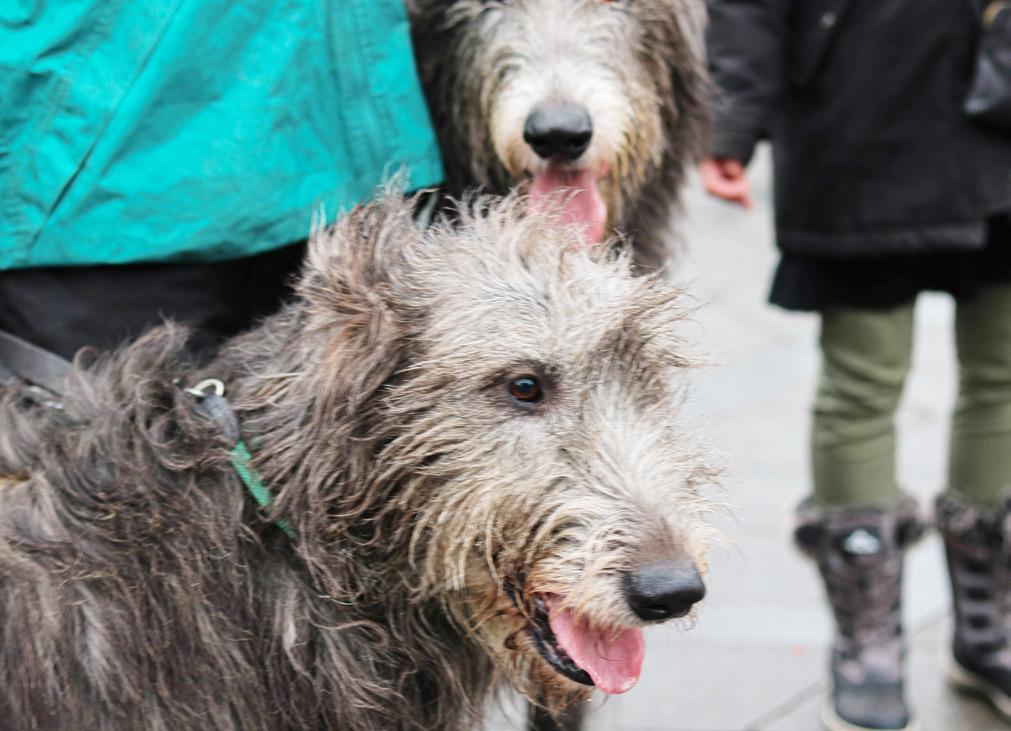


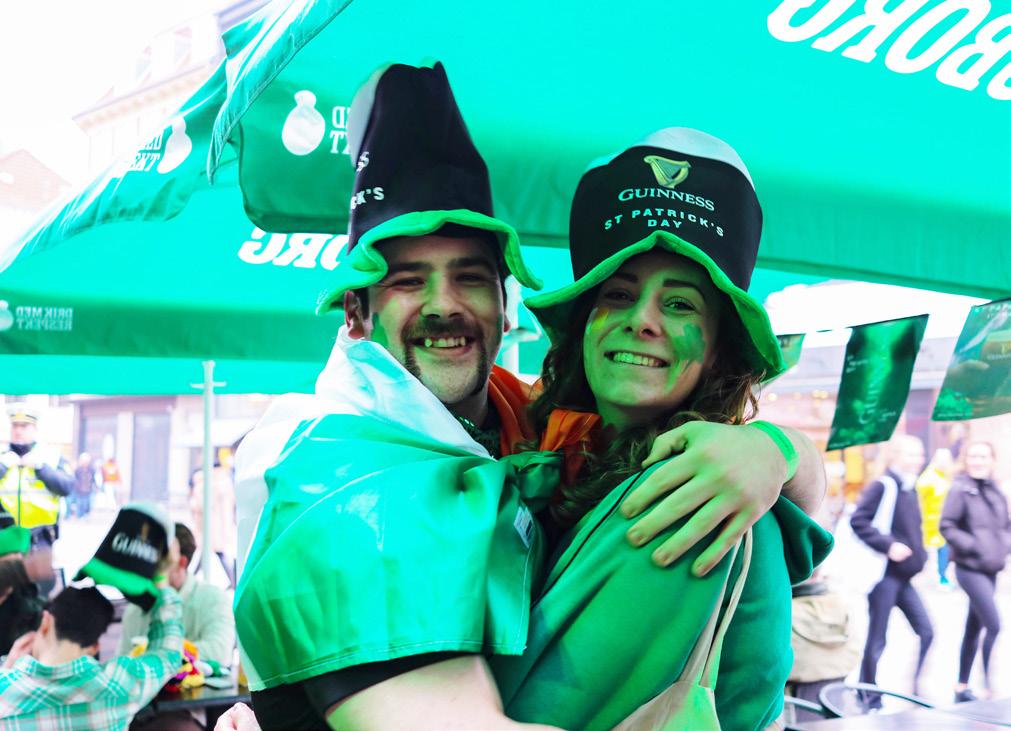




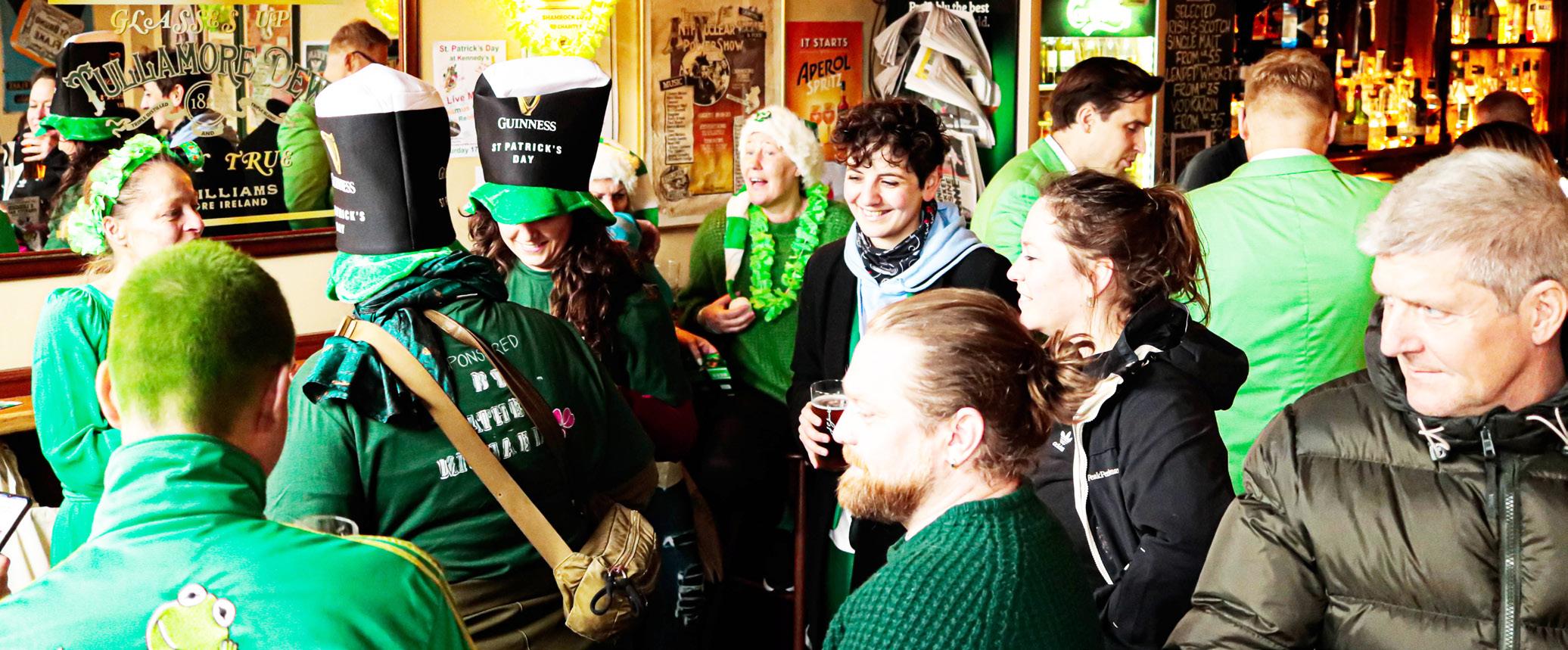

There was no easy path from the door to get served at Kennedy’s Irish Bar before the race started.
It was packed out with teams getting their race packs, like Clare and Ása (with the Guinness hat), or just taking their time to drink a Guinness, like Mickey and Peter (in the green suits on the right) – lining the stomach, no doubt, ahead of the half of lager each runner is required to drink at each of the race’s pit stops.
Moments before Globe quizmaster John Kelleher (left) officially started the race, the teams were getting ready, each in their own way but mostly with their first beer. The defending champions (centre), the ‘Little Lebowski Urban Achievers’ (James Rasmussen and Jorge Guzman Michua), were confident of winning a second title, but they ended up second. Catrin Adams, Jess Hearne and Michael Arrowsmith (right) had their Guinness in hand and on their heads. Jess and Michael overtook our team at the third pub
The race finished at The Dubliner, where the owner Gus laid on the last beers of the race. Post-race, Jess didn’t seem to notice the race as he enjoyed a well-earned rest (left). Fellow racers Cian and Vera (centre) were in jubilant mood after finishing and getting ready for their next green beverage. While Nike Neven Nygaard and Maria Ball (right), ‘The Ones who Won the Shoes’, finished in a creditable ninth place. Meanwhile, for the first time in its history, CPH POST even entered a pair into the race: 14 minutes off first place in 16th, but almost two and a half hours ahead of the six teams that came equal last.
The party continued at The Dubliner, but many met up at Rådhuspladsen to take part in the parade. Under the light rain, kids got their faces painted and dancers showed off their Céilí skills. About ten dancers from the Dark Green School of Irish Dancing and the Copenhagen Irish Set Dancers show the public their best Irish steps on stage (left). A big hit with the crowd were the Irish wolfhounds Shadow and Olivia (centre – owned by Tina and Jan), who made plenty of people stop to pet them. While Taurus (right), one of Ina Hansen’s dogs, prefers Pat to a pet – specifically St Patrick (Ian Bruns), who was good enough to share his Irish coffee from the cup

NO TRIP TO THE EMERALD ISLE IS COMPLETE WITHOUT A VISIT TO THIS SELECTION
BY PAUL MCNAMARAIreland may be a small island, but it’s got a big heart and jawdropping landscapes.
Best appreciated by road, its west coast, in perpetual submission to the Atlantic, is probably the standout.
And accordingly it dominates our recommendations, all embracing extraordinary nature, which we’re confident won’t disappoint.
Welcome to one and all
Central to the appeal are the fascinating people, whose warm nature is ably reflected in the wildness of the rugged nature.
Everything you’ve heard about Ireland is true, but while it’s steeped in history, it continues to write its own story, offering a culture ever-blossoming in the realms of music, food and the arts.
Céad míle fáilte – a hundred thousand welcomes.

Ring of Kerry, County Kerry
With its rugged islands, white-sand beaches and dramatic mountains, the Ring of Kerry astounds visitors with its raw nature and charming villages. Pro-tip: prepare to be breath-taken by the beauty of Moll’s Gap.
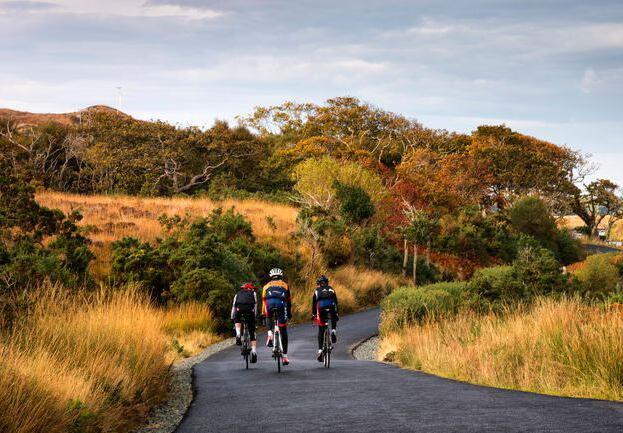
Aran Islands, County Galway Famed for their knitted jumpers and pretty thatched cottages, many fall in love with the wild landscapes of the Aran Islands. Easily visible from the counties of Clare and Galway, the rocky, wind-buffeted island has a desolate beauty guaranteed to make you fall in love.
Glendalough, County Wicklow
Glendalough, or Gleann dá Loch (Valley of the Two Lakes), is one of the most significant monastic sites in Ireland. Carved out by glaciers in the Ice Age, this national park hosts jaw-dropping nature and a 6th century round tower, the surviving remnants of a monastery founded by Saint Kevin.
Cliffs of Moher, County Clare

No trip to Ireland would be complete without a visit to the Cliffs of Moher situated on the wild Atlantic Way. The Cliffs of Moher have majestically faced the Atlantic for over 350 million years
and, simply, their beauty is incomparable. It’s Ireland’s most visited place for a good reason.
Glenveagh National Park, County Donegal Ireland’s second largest national park, in the northwestern corner of County Donegal, is a remote and hauntingly beautiful wilderness of rugged, raw nature. Deep within the spectacular Derryveagh Mountains, pristine lakes, wondrous waterfalls and oak woodlands are waiting to be explored.
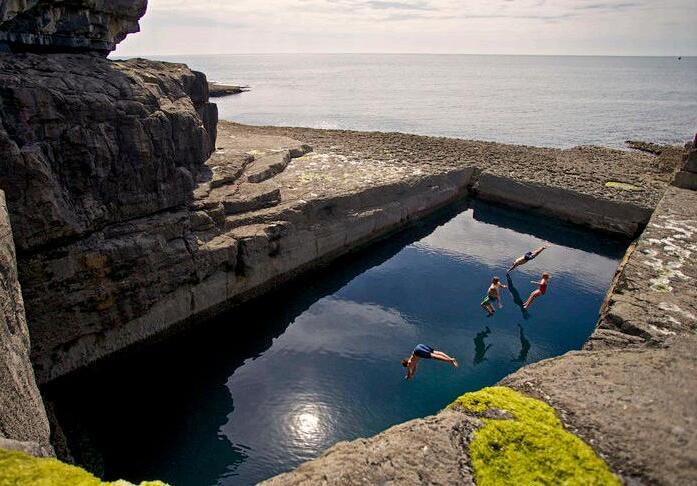
Blarney Castle/Stone, County Cork
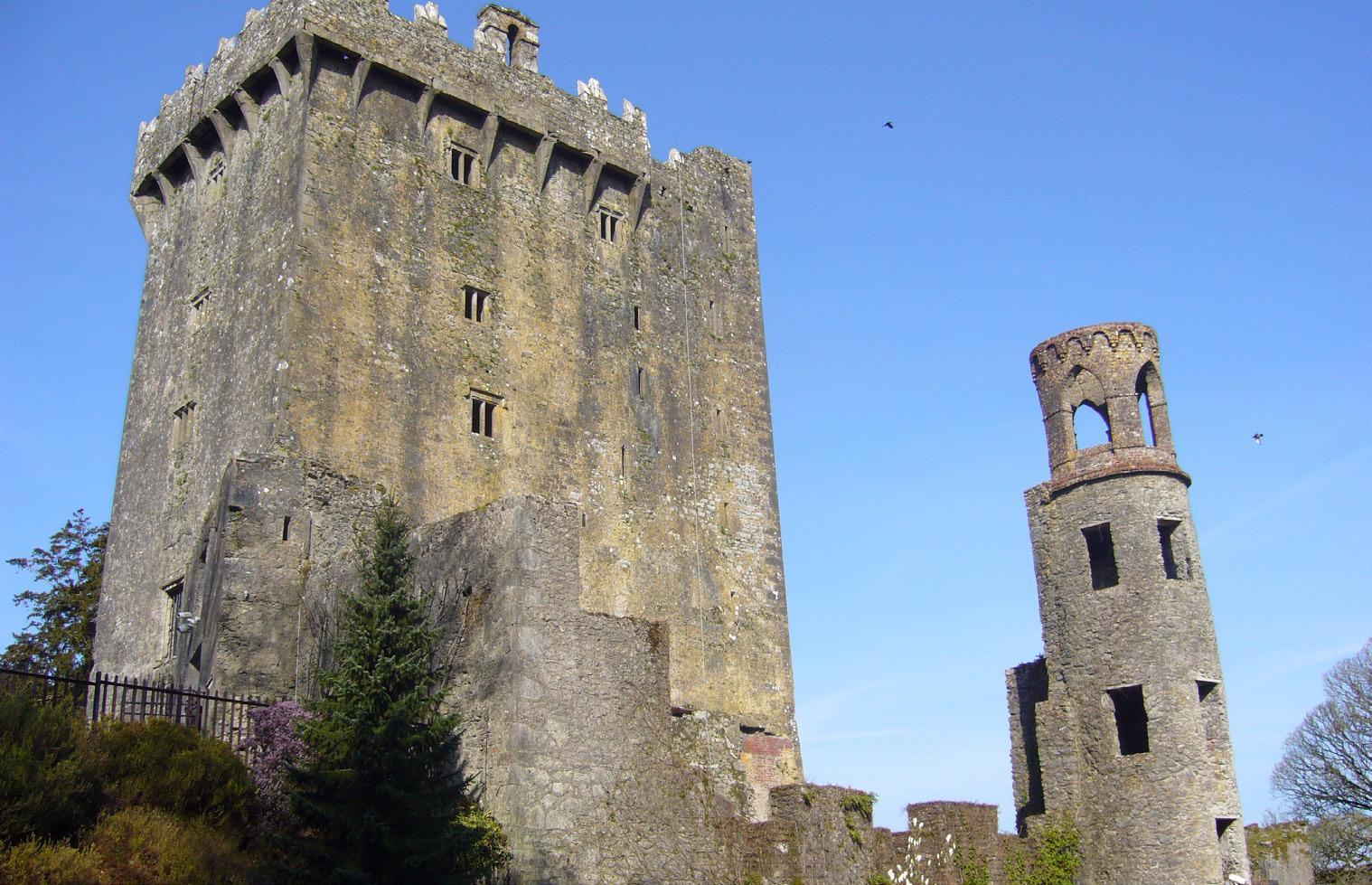
Reputed to endow the gift of the gab on those who dare to hang their head off the parapets to kiss it, the stone is not the only reason for visiting Blarney Castle. Standing for over 600 years, the massive building boasts compelling dungeons and towers.
Benbulben, County Sligo

The area is also known as ‘WB Yeats Land’, as it was the inspiration for much of his poetry. The area contains a walk that starts just four miles from the main man’s grave in a secluded forest area, before offering up absolutely magnificent views of Donegal Bay and the Atlantic Ocean.
The Rock of Cashel, County Tipperary

Perched upon a limestone rock formation in the Golden Vale, this magnificent group of medieval buildings includes a 12th century high cross in a romanesque chapel, a 12th century round tower, a 15th century castle, and a 13th century gothic cathedral among

others. It’s said that this was also once the seat of the high kings of Munster prior to the Norman invasions.
Skellig Michael, County Kerry


On this island 11.6 km west of the Ivereagh Peninsula is a well-preserved 6th century monastic settlement. The UNESCO World Heritage site was recently used by the Star Wars franchise as Luke Skywalker’s hideaway. It is home to 23,000 gannets, making it the seabird’s second largest colony in the world, and is Ireland and Europe’s most westerly point.
Slieve League Cliffs, County Mayo
Who would have thought the third highest cliffs in Europe could be found in Ireland?
Placed after Hornelen in Norway and Cape Enniberg in Faroe Islands, the Slieve League Cliffs rise 688 metres above the Atlantic Ocean. Effectively the slopes of Mt Croaghaun, they are best viewed from the water as it can get mighty slippery up there! And if the fall doesn’t kill you, the killer whales will!

NATHAN WALMER
Nearly a decade ago, I spent a summer I would never forget in the enchanting city of Dublin, Ireland.
And it was love at first sight as we made our descent down to Dublin Airport.
40 Shades of Green
Looking out the window I could see its centuries-old architecture elegantly mixed with the state-of-the-art, the River Liffey flowing through the heart of the city, and the ‘40 Shades of Green’ Johnny Cash describes in his tribute song to Ireland and its lush, green beauty.


In this spirit, here are several ‘must-sees’ if you should be so lucky to visit Dublin and meet its famously friendly people.
The Guinness Storehouse
Why not start your Dublin adventure by submerging yourself in the Irish stout that’s synonymous with the country? Brewed at the Guinness Storehouse since 1759, every
tour begins with a glimpse of the 9,000year lease agreement to rent the factory at a cost of £45 per year by Arthur Guinness in 1759.
From here you will ascend the museum’s seven floors that surround a glass atrium made to look like a pint of Guinness. On the top floor, or the ‘head of the pint’ if you will, is the ‘Gravity Bar’ offering a 360-degree panoramic view of the city, which you get to enjoy with a complimentary pint of ‘the black stuff’. Make sure you get a ‘STOUTie’ – a malt extract imprint onto the head of your Guinness in the image of your choice.
Built in the early 13th century on the site of a Viking fortress dating back to 930, Dublin Castle is centred in the heart of the city. This was the site of the original Dubh Linn (or ‘black pool’) where the Vikings built up a trading base and ultimately gave Dublin its name. For centuries the complex served as headquarters for English rule over Ireland until it was relinquished in 1922 following independence. Aside from featuring castle ruins, an extensive history and worldrenowned institutions such as the Chester Beatty Library, the castle complex’s beautiful
grounds and gardens alone make it worth the visit.
Trinity College, which was founded in 1592 by Queen Elizabeth I, is Ireland’s oldest university. Aside from remaining an active university today, its stunning campus and historical artefacts also make it one of Dublin’s most popular tourist attractions. The Old Library, considered one of the world’s most magnificent, is home to Ireland’s greatest cultural treasure: the famous medieval manuscript ‘The Book of Kells’. Once you’ve exhausted yourself with the history, stretch out on the grass in the on-campus beer garden The Pavilion, which welcomes students and non-students alike.
Whether you’re a sports fan or not, a visit to Dublin’s Croke Park offers an immersive look at Irish culture. Known to locals simply as ‘Croker’, it also plays host to major music acts and even Pope Francis in 2018. Croker seats 82,300 people, making it the thirdlargest stadium in Europe. Even if you don’t catch a live event there, you can visit its Gaelic games museum, take a stadium tour and finish off with a skyline tour for death-
defying views of Dublin from a rooftop platform suspended over the pitch itself.
In the spirit of St Patrick’s Day, what good would a list be without including St Patrick’s Cathedral? As Ireland’s largest and tallest cathedral though, it is a fantastic place to see any time of year. The church, which was erected between 1191 and 1260, is built on the site of a well that was apparently used by St Patrick himself to baptise local Celtic chieftains in the 5th century. Tours are open to the public, and during school term you may see its world-famous choir perform daily.
Most visitors forget they’re in a major city when they enter the 7 sq km confines of what is the largest urban park in any European capital. Be it renting bikes, picnicking, searching for the park’s native deer population or visiting Dublin Zoo (founded in 1831, it is one of the world’s oldest), there’s loads to see and do here. The official residence of the president of Ireland is also within the park’s gates and free to tour.
Choose these five as your pit-stops and you’ll be singing their praises for the rest of your days
Captured in the books of James Joyce and more recently Roddy Doyle, Ireland’s urban charm is undeniable.
But as much as we might like to retrace the steps of Leopold Bloom and Jimmy Rabbitte from ‘The Commitments’, the capital is only one small slice of it.
Lots of exploring!
If you are keen on venturing outside of the bustling capital, there is no shortage of quaint towns and seaside cities to explore in Ireland.

Here are some of the most highly recommended: Cork
Although best-known for the Blarney Castle and Stone which sit just outside the city, where thousands flock in search of the Gift of the Gab, Cork itself should not be overlooked. As the third largest city, it is considered its culinary capital and no trip is complete without a visit to its crown jewels, the English Market, which is widely acclaimed as one of the finest covered markets in Europe. Dubbed the ‘Rebel City’, Cork has a rich history of rebellion worth discovering at its Cork City Gaol and Collins Barracks Museum. For less violent historical content, there’s also the Butter Museum, which covers the story of Ireland’s most important food export. All in all, there is much to see and do in this seaside city.
The Dingle Peninsula and surrounding areas are well-known as some of Ireland’s most scenic drives, but the town of Dingle deserves a visit too as it is one of the most quaint and charming towns in all of Ireland. ‘Surfing’ and ‘Ireland’ are two words that might not seem like they belong together, but in picturesque Dingle Bay there are all manner of oceanic activities, including surfing lessons, kayaking, and whalewatching excursions. You may also see a wealth of marine life at the ‘Oceanworld’ aquarium which is Ireland’s largest. If you prefer to ‘drink like a fish’ rather than see any, you’re also in luck! For a humble town of about 2,000 inhabitants, Dingle boasts a whopping 30 pubs - an impressive ratio of one pub for every 66 residents. The Dingle
Whiskey Distillery is also a great place to tour and imbibe the local spirit(s).
Belfast
Belfast, the capital and largest city of Northern Ireland, is perhaps best known for building the doomed ocean liner ‘RMS Titanic’. The site of the shipyard where its construction began in 1909 is now an expansive waterfront with markets, film studios, historic maritime landmarks and the ‘Titanic Belfast’ museum, which was crowned the ‘world’s leading tourist attraction’ in the 2016 World Travel Awards. If you would like to dig into more dark episodes in Belfast’s history, tour the Victorian era Crumlin Gaol Prison, which remained active for 150 years and saw many famous inmates behind its bars from the Irish War of Independence and ‘The Troubles’ before closing in 1996. Despite its turbulent politics and history, Belfast is
a vibrant city that’s been experiencing a resurgence in tourism and for good reason.
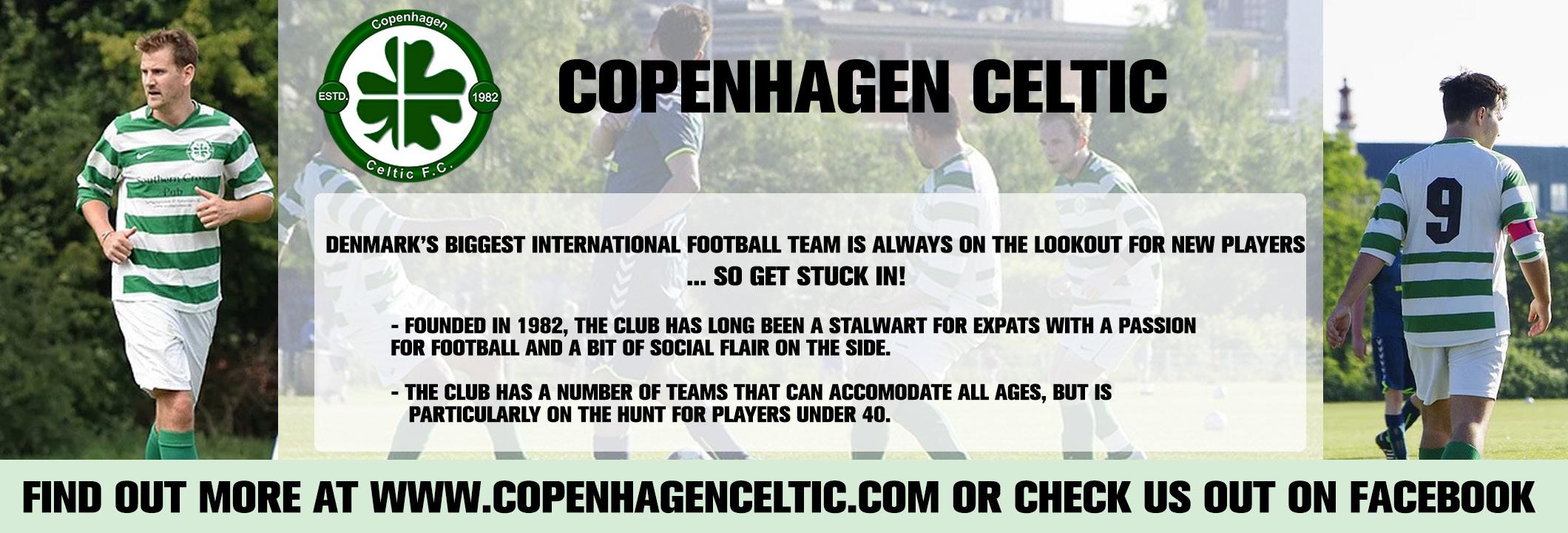
Galway
Galway has a well-earned reputation for being a ‘party city’ thanks to its nightlife, traditional Irish music scene and many festivals. The main thoroughfare ‘Shop Street’, Eyre Square park and Latin Quarter are always lively with street buskers, art galleries, shops and some of the city’s favourite pubs. Set on the coast in the west of Ireland, Galway began as a small fishing village and grew to become a prosperous medieval walled town ruled by 14 merchant families from the 13th to the 19th centuries, giving it the nickname the ‘City of the Tribes’. To learn more about Galway’s medieval past and current cultural significance, visit the Galway City Museum. Galway is currently designated the ‘European Capital of Culture’ for 2020 and should be at the top of any list
of cities to visit while in Ireland.
Kilkenny
Kilkenny is considered one of the most beautiful medieval cities in Ireland with the spectacular ‘Kilkenny Castle, Rose Garden and Park’ as its centrepiece. The castle was founded in 1195 during the Norman occupation of Ireland and was later converted into a noble estate with magnificent grounds and gardens - all of which are open to the public. From the castle there is a popular discovery trail linking other Kilkenny highlights called the ‘Medieval Mile’. St Canice’s Cathedral and Round Tower, the second largest cathedral in Ireland, is one such highlight. Climb up the well-preserved 9th century round tower for 360-degree views of Kilkenny. Continue down the ‘Medieval Mile’ for a fairy tale-like walk back in time that will take you through a city known for its festivals and arts tradition.
Six Oscar nominations in the last decade … it’s a tally any country would be proud of
BEN HAMILTONAustralian actresses, Slovenian cyclists, Argentinian dictators … sometimes a nationality develops an inexplicable knack for producing legions of talented individuals in the same field – and Ireland’s propensity for producing actors has not gone unnoticed in recent years.

From Richard Harris to Colin Farrell, the assembly line has gone Mach 10.1 in recent years – mostly in line with the explosion of its TV industry: from the commendable‘Normal People’and‘dependable’Kin to the reprehensible ‘Mrs Brown’s Boys’ and indefensible demise of ‘The Fall’. See our factbox for our top five youngsters to look out for.
Class of 2023
But what about the actresses? No, we’re not talking about the one-offs – from Hollywood legend Maureen O’Hara to veruca dissector Brenda Fricker, who swapped the wards of Casualty for Oscar night to win Best Supporting Actress in 1990 – there have inevitably been a few over the years.
No, this is all about the class of 2023: a top ten to rival anything the men can put together. We’ve got Oscar nominees by the bucket-load, singers and scriptwriters – talent that makes you question what they’ve put in the water.
by the time she was 25 – or should that be seven-time nominee Peter O’Toole, as she is yet to win one. ‘Little Women’, ‘Lady Bird’, ‘Brooklyn’ and ‘Atonement’ … what’s next on the journey of the 28-year-old born to Irish parents in the US, who moved to Dublin at the age of three. She’s already reached the stars.
3 Jessie Buckley
as one of the leads in two of Netflix’s most popular shows of recent years, but Nicola Coughlan has defied expectations her whole life and never been afraid to stand up for the downtrodden or, when she feels trodden on, herself. The star of Derry Girls and Bridgerton, who grew up in Oranmore near Galway, took exception to an article in The Mirror criticising her choice of dress for the 2019 BAFTA TV awards, responding with the tweet “I mean incorrect @DailyMirror I look smokin’, sorry bout it”. Well, she is so hot right now she even got invited onto ‘RuPaul’s Drag Race UK’.

 5 Ruth Negga
5 Ruth Negga
was confirmed – the directorial debut of Dan Levy from Schitt’s Creek. So her film career would appear to have found its paddle again.
It’s got to a point when it should no longer surprise you when Sharon Horgan is cast in a major Hollywood film, like just recently as the wife of Nicolas Cage (playing himself) in The Unbearable Weight of Massive Talent. She was even allowed to retain her Irish accent – that’s how sought-after she has become. Raised in Bellewstown, County Meath – her brother is the rugby player Shane – nothing was handed to her on a plate. At the age of 36, she created the comedy series Pulling to land her big break, followed by the equally-acclaimed Catastrophe. And now her new series Bad Sisters, one of the hits of 2022, has opened the door to whatever she desires.

From Caoimhe and Niamh to Siobhan and Aoife, Irish names can be hard to pronounce, even if the end result sounds simple and familiar. Step forward Saoirse (pronounced seeuh-shuh) Ronan, Ireland’s answer to Meryl Streep, who had already been nominated for four Oscars
Fame took a while to come knocking at the door of Oscar nominee Jessie Buckley. An early fan was composer Andrew Lloyd Weber – the brains behind a 2008 talent show to discover the next Nancy for a new production of ‘Oliver!’ on London’s West End, in which she finished second – who ended up mentoring her. Since then, roles in the likes of ‘Chernobyl’, ‘Wild Rose’, ‘Fargo’ and ‘The Lost Daughter’ have cemented her leading lady status. Born in Killarney, Jessie is another Irish actress with the world at her feet.
4 Nicola Coughlan
Hard to imagine this actress would end up
Yet another Oscar nominee is Ruth Negga, who grew up in Limerick. Nominated in 2016 for ‘Loving’, a depiction of a couple’s battle to have their inter-racial marriage recognised by US courts in the 1960s, her career has somewhat stalled since then, although she has been busy on the stage – in 2011, she memorably portrayed Shirley Bassey in a BBC miniseries. However, in October her casting in ‘Good Grief’

Nominated for the Oscars this year is Kerry Condon, the more or less sole actress in ‘The Banshees of Insherin’, in which she plays the considerably smarter sister of Colin Farrell’s simpleton. Following her BAFTA triumph, she’s the second favourite to win. Hitherto, her most noted role was playing the daughter of Mike Ehrmantraut in ‘Better Call Saul’. Oscar night will determine whether we better call her agent
It was a surprise to many when Caitríona Balfe from Greater Dublin failed to land a nomination for her brilliant portrayal of the main character’s mother in Kenneth Branagh’s ‘Belfast’. At the Golden Globes, BAFTAS and several others, she’d been preferred to Judi Dench for a Best Supporting Actress nod, but seniority called for the Dame when it came to the big one.
Known wide and far for her leading role in ‘Outlander’, at 43 she hasn’t got much left to prove, but you never know.

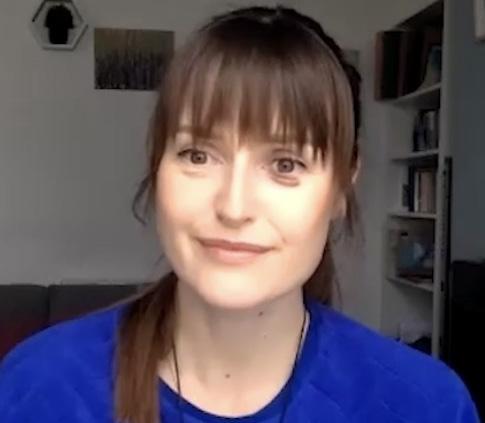

Turns out there’s a good reason why Bono was always showing off his packet, as it was harbouring the seeds of one of Ireland’s brightest acting prospects. Fortunately, Eve Hewson opted to take her rock god Daddy’s mortal name – otherwise people might have thought her parents were Sonny and Cher. So far she’s made a few notable films – including a lamentable 2018 retelling of ‘Robin Hood' –but it’s on TV where she’s managed to shine, bringing a kooky nature and genuine menace to her roles in ‘Behind Her Eyes’ and ‘Bad Sisters’.

His role as Dominic in ‘The Banshees of Inisherin’ could have been a typical dim-but-loveable bit part, but he manages to make the role increasingly nuanced as the film goes on. Not unlike Dominic, Keoghan overcame a tough childhood and has since shot to stardom with roles in ’71, Dunkirk, and The Batman. Less well known is Keoghan’s love of boxing. ”The thing with boxing is, it’s the only time I feel really present,” he told the New York Times. “You can do meditation – which I don’t – but people go on about feeling in the moment and, for me, that’s when I’m boxing. You’re totally immersed in this state that I can’t describe.”

 Andrew Scott
Andrew Scott

Blink and you’ll miss her in the likes of ‘Starstruck’ and ‘Line of Duty’, but stardom beckons for Elva Trill following her sizeable role in the recently released ‘Jurassic World Dominion’. Trill, who grew up in Ballymote, will be a household name before you know it.

In the end, it was a tussle for the final place on our ranking between Clare Dunne and Alison Oliver – respectively the stars of recent series ‘Kin’ and ‘Conversations with Friends’. In the end, Dunne gets it because 1/ the Dubliner is brilliant in her breakout part and 2/ it’s refreshing to see an actress put herself out there with such a significant birthmark on her face – in her case, under her left eye. Well, keep your eyes on Miss Dunne as her career is in liftoff.
After starring as Benedict Cumberbatch’s eternal nemesis Moriarty in ‘Sherlock’, Andrew Scott has gone from strength to strength. The eclectic actor was even in ‘Saving Private Ryan’ – he’s one of the queasy-looking extras on the boat before they land at Omaha Beach. His most important recent role was as the ‘hot priest’ in Phoebe Waller-Bridge’s hit comedy ‘Fleabag’. This prompted someone to write on Twitter that “When that priest said ‘kneel’ my vagina exploded in a way a man has never quite been able to achieve.” Unfortunately, for the author of that post, Andrew came out publicly as gay in 2013.
Paul MescalAnother actor whose most well-known char-
acter has earned him heartthrob status is Paul Mescal. His role as Connell in the TV adaptation of Irish novelist Sally Rooney’s‘Normal People’ led to the creation of an Instagram account ‘@connellschain’, which primarily features photos of Connell adorned in his best Argos chic. It has 143,000 followers. The Guardian published an article called ‘Chain Reaction: Why is there such unbridled lust for Connell’s necklace in Normal People?’ Mescal, meanwhile, is proving to be anything but normal, having been nominated for Best Actor at the Oscars for his role in ‘Aftersun’.
Colin Morgan
Magic Colin Morgan first hit our screens as Merlin in the TV series of the same name There was a slight kerfuffle at the time because Morgan, who is Northern-Irish, had to disguise his accent, leading people to assume he was

English. This annoyed certain viewers, who pointed out Merlin, who was Welsh, should speak with a Welsh accent. Hopefully someone told them there are limits to the historical accuracy required from a TV series about a mythical wizard. Anyhow, just like Harry Potter, Morgan eventually grew up, although unlike Daniel Radcliffe, he developed leading man looks. Recently cast at the baddy in ‘Belfast’, he has also had big roles in TV series ‘Mammals’ and forthcoming movie ‘Corsage’.
Domhnall Gleeson
Everyone knows Brendan Gleeson, who plays the curmudgeonly Colm in The Banshees of Inisherin. But what about his son, Domhnall? Thanks to roles in ‘Ex Machina’, the latest ‘Star Wars’ trilogy and recent series ‘The Patient’, he’s building up a portfolio that might soon challenge his Dad’s. (SH)
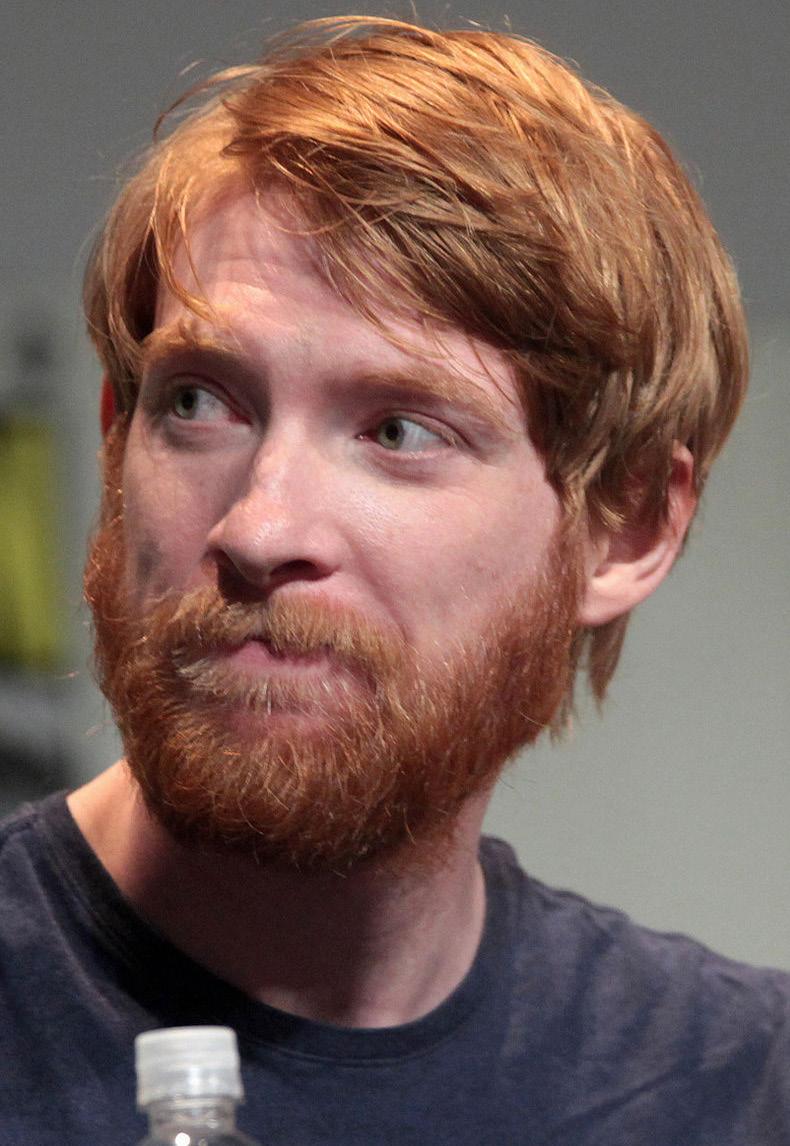
Ireland is a great sporting nation: from the classics to the downright bizarre, we take a look at how they keep themselves active
Roy Keane, Brian O’Driscoll, Stephen Roche… Ireland always has and probably always will produce great sporting figures. With a population comparable in size to that of Denmark, the Irish continue to punch above their weight in international sport.
Most of the usual suspects
At the moment they are ranked number one in the world in rugby union, and with the World Cup in France just around the corner, who knows if they could lift the trophy come October 28.
Football is also very popular in Ireland, but unfortunately the national team has seen better days.
Ireland can certainly hold their own on the greens – they are apparently the most golfmad nation in the world, and Rory McIlroy is currently ranked the world’s third best player.
But the less said about tennis the better. Simon Carr (852) and Sinead Lohan (1,484) are their highest ranked players!
No shortage of success
Boxing in Ireland has always had a big following, as have the bookies’ other favourite sports, horse racing and greyhound racing – so something of a pattern there.
An Irish cyclist, Stephen Roche, was the first athlete from the British Isles to win the Tour de France, preceding the second, Bradley Wiggins, by a quarter of a century.
And Ireland are no spring chickens at the Olympics, where they’re ranked 54th on the all-time list. Swimmer Michelle Smith is their most decorated Olympian, although she’s no longer mentioned in polite conversation, even though the doping allegations were never proven.
Spiritual home of sport
None of the above sports, however, are more popular than the Gaelic games, Ireland’s very own sporting heirloom. These sports, unique to Ireland, have existed for centuries and some for millennia.
Croke Park in Dublin is the spiritual home of the Gaelic games, as well as being the seat of the Gaelic Athletic Association. Under the GAA’s watchful eye, these traditional sports are as popular as ever, and Croke Park is regularly packed to the rafters.
As St Patrick’s Day approaches, here are a few of the most popular Gaelic games:
Gaelic Football
As of 2022, this is Ireland’s most popular sport. Known in Ireland simply as ‘Gaelic’ or ‘GAA’, this madcap sport is probably best described as
a mixture of football and rugby with a bit of basketball thrown in for good measure. Played with a regular football, points are scored by hoofing the ball through the opposition’s goalposts. Confusingly for the uninitiated, there are both football and rugby goalposts. Either way, the Irish clearly love it, as crowds of over 80,000 flock to Croke Park to watch the All-Ireland Senior Championship each year.
Hurling

land called Shinty. They are so similar, in fact, that the Shinty-Hurling International series is held annually, uniting the Gaelic nations of Scotland and Ireland.
Camogie
Camogie is essentially hurling, but played by women. Strangely enough, the sport was mentioned by Irish playwright Samuel Beckett in his absurdist masterpiece ‘Waiting for Godot’, although I won’t include the quote here because it doesn’t make much sense.


different variations – softball, 4-wall, 1-wall and hardball – but forget all of that: just as long as you have a wall and a ball and a pal, you can play.
Rounders
Is rounders a Gaelic game? Apparently so, although exactly the same game is played in the UK. Admittedly, it’s not very exciting.
Mentioned frequently in Irish legends and folklore, hurling has existed in Ireland for thousands of years. Described as “the most beautiful and skilful of the traditional Irish sports”, it is a bit like hockey, but only a little bit. Each player has a stick called a ‘hurley’ –camán in Gaelic – which they use to hit or pick up a small leather ball called a ‘sliotar’. Points are scored by hurling the sliotar through the same sort of goalposts found in Gaelic football. Played at a blistering pace, hurling has been described as the world’s fastest field sport. A sport akin to hurling exists in Scot-

If the three-legged race doesn’t give you enough exercise on St Paddy’s Day, then this is probably the easiest Gaelic game to play at home. Nothing to do with Olympic handball – which the Danes never tire of reminding us they are the best in the world at – it is a bit like squash, except the ball is bigger and you use your hands instead of a racquet. Most people will have played some version of this game as a kid. There are four
Played in pubs all over Ireland, this is the country’s national card game. Over 400 years old, it is linked to the even older Scottish game of maw. Like poker, ‘Spoil Five’ is played with chips, and players have to win them by robbing, reneging, jinking and paying-off –to mention a few of the terms specific to the game. Like poker as well, Spoil Five is a game often used for gambling. Even WB Yeats wrote about it, speaking of “old men playing at cards with a twinkling of ancient hands”. Cards are at the heart of Irish culture, and any good pub will have a deck.

The problem with St Patrick’s Day is that it always falls during the 40 days of Lent, in which the consumption of meat is prohibited.


This means that of the three traditional recipes below, good Catholics are only permitted to make one of them before Good Friday!
However, the church has been known to make an exception on St Patrick’s Day – with good old bacon and cabbage being the most popular choice.
Potatoes and other veg
Nevertheless, the potato-heavy Colcannon tends to please most Irish diners.

After all, Irish food has been described as falling into three categories: before the potato, after it arrived and after it failed.
And it’s fair to say that over the past 30 years Ireland has really started to capitalise on its abundance of fresh ingredients to fashion something of a culinary revolution.
- Leftover lamb roast
- Potatoes, plenty of them
- Peas, frozen
- Lamb stock cube (a vegetable one will do)
- Several carrots, leeks
- Salt and pepper to taste which ensures all the donations go to charity uncut.
Take the leftover roast and assess the damage. To make a decent Irish stew to feed the family, you’re going to need at least two handfuls of lamb.

Shred every piece of meat, put the bone into a saucepan of water with vegetables, simmer and reduce. The bigger the bone, the better the stock. You might find that you need to top it up with lamb or vegetable stock.
Meanwhile, peel the potatoes and slice them. Add them and any other raw vegetables to the sieved stock and boil them. The great thing about this process is the margin for error. Overcook them and it’s not a disaster; if anything, it will give the stock more body. Near the end of the process, add the leftover roast vegetables (chopped), the meat and the peas, and season to taste.
So, while most chefs are by now probably throwing up their arms at the amateurish nature of this recipe, who who honestly cares providing it tastes good. This dish should be completely idiot-proof, not some version dreamed up by a ponce that requires fillet. Bon appétit!
- Loin of Bacon
- 2 medium-sized, quartered white onions
- 1 stick of celery, 2 large carrots
- 1 small cabbage or ½ large one
- ¼ cup of butter
- ground cloves, salt, and pepper
- teaspoon of honey + wholegrain mustard
Simmer the meat (corned beef: 25 minutes per half kilo; bacon: 20 mins/half kilo plus 15 mins).
Allow scum to form and then replace water, adding vegetables once returned to simmer. Once the meat is cooked, remove and lightly towel to dry it. Discard the vegetables. Retain one cup of broth for later.
Mix the honey, cloves and mustard together
and smear over the meat. The meat should then be left for at least 30 minutes, but preferably several hours. Place meat into a 200-degree oven and roast for half an hour.
As soon as oven door is closed, place shredded cabbage in a saucepan with the cup of broth from the meat and the butter. Stir the cabbage and add pepper and salt. When the liquid has all boiled off, the cabbage is ready.

The dish is often served with mashed potatoes or ‘champ’ (essentially mashed potatoes with some spring onions, served as a mound with a pool of butter in the middle).
Parsley sauce and/or mustard sauce also make good additions.
INGREDIENTS
- 2 lbs potatoes
- ¼ cup butter
- 3 cups of kale (or shredded cabbage)
- 1 bunch green onions, thinly sliced
- 1 cup cream
- Salt and pepper to taste
Peel the potatoes and cut them into large chunks. Place them in a medium-sized pot and cover with enough water to leave a few centimetres at the top. Salt lightly and bring the water to a boil on top of the stove. Cook until potatoes are tender. Drain the pan and set aside.
Meanwhile, melt the butter over medium-high heat in another saucepan. Once the butter is
completely melted, add the cream and kale or cabbage. Cook until the kale is wilted, stirring occasionally (about three to five minutes).
Then add the green onions and cook a minute further. Combine the greens mixture and the potatoes in the medium-size pot.
Reduce the heat and mash the potatoes into the greens using a potato masher or large fork. Avoid the urge to use an electric mixer as this will make the potatoes too smooth and gluey – you want the potatoes to be soft, but still retain some shape.
Season the dish with salt to your liking, and serve while still hot with a pad of butter in the middle of each serving. Enjoy!




































